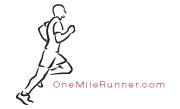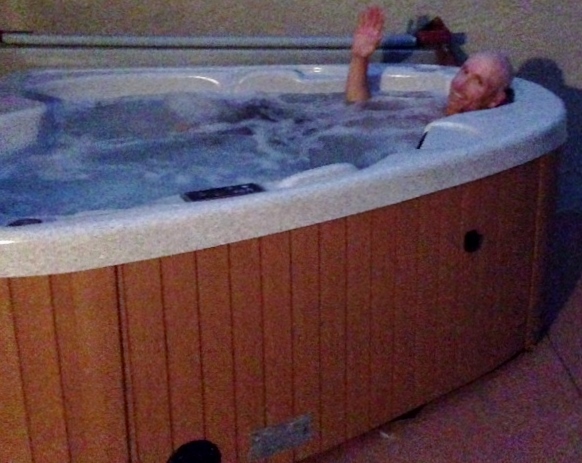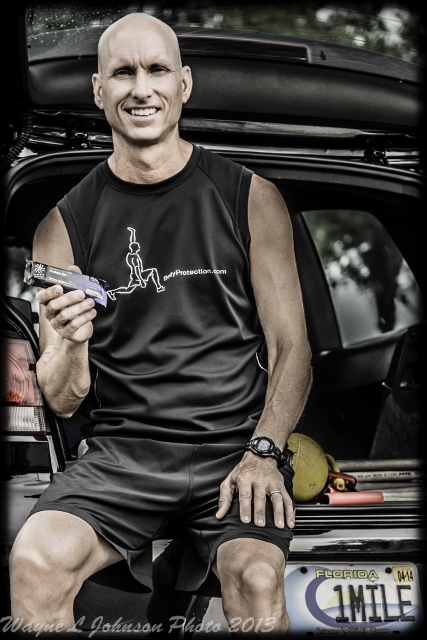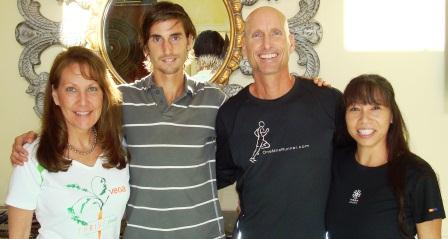To start 2014, www.OneMileRunner.com wanted to share an inspiring story of recovery and performance…here is an article by Jim Burnett, resident of New Hampshire and member of the Upper Valley Running Club:
October 20, 2013: “Turn and burn,” Joe, shouted as I carved my way around the final turn, hugging the curb and peeking back to see who was creeping up on me – 200 meters to go. This race, the Granite State 10-Miler, was to be a tune-up for the Manchester City Marathon two weeks hence, which in turn was to be my final race for the New England Grand Prix Series on which I had pinned my hopes for a top five age-group final standing. I sprinted down the home stretch, my pursuer licking at my heel and then, with 20 meters to go, my hamstring suddenly “popped.”
December 8, 2013: Seven weeks after the hamstring injury I floated along the coastline of Cape Ann wearing a smile that wouldn’t go away. I had done my rehabilitation homework, passed strength and agility tests week after week and 49 days post-injury, I raced the Half MerryThon in 1:37:07, twenty-two seconds faster than at the New Bedford Half Marathon nine months earlier. I was not only “back”, my hamstring was stronger than ever.
Honestly, the hamstring injury scared me. Could I fully recover? I was also embarrassed for desperately flailing and over-striding down the home stretch and I paid the price. I was unable to run the Manchester City Marathon and, as a result, slipped from 5th to 7th in the series age-group standings. It was a stupid mistake, but with the help of some running friends, I learned a valuable lesson. If you put your mind to it and you are patient and careful, an injury can become a godsend. You can recover and come back with a vengeance and become stronger than before.
As fate would have it, a few days after the injury I was to meet with Laura and Greg Hagley to discuss coordination of the Upper Valley Running Club Tuesday Night Track (UVRC TNT) workouts for the upcoming winter months. I mentioned my injury and within five minutes Laura and Greg (both practicing physical therapists) diagnosed the severity of the damage and recommended an article for rehabilitation from the Journal of Orthopaedic & Sports Physical Therapy (Vol. 40, Number 2, February 2010 entitled, Hamstring Strain Injuries: Recommendations for Diagnosis, Rehabilitation, and Injury Prevention). Greg asked if I felt pain in the middle of the hamstring or at either end where the tendons attach to the bone. The good news for me was that I had partially torn fibers in the middle of the muscle and I had not ruptured the muscle or its tendon. Laura liked the journal article and recommended it because it lists 3 phases for rehabilitation in which the injured runner performs a series of exercises and movements, such as side-stepping, pedaling a stationary bike and doing body bridges, until he/she meets the criteria for progression to the next phase. In order to progress from phase one to phase two, for example, you first have to be able to perform a normal walking stride without pain and be able to jog at very slow speed (10-12 mpm). I liked the program because I could start right away, even in my injured condition – walking and pedaling and doing slow speed agility drills. I also followed the typical rehab routine of icing and elevating the injury. Within a day I was seeing progress, and I was convinced I was on the road to recovery. I also knew that I needed to be patient because it would take 4 to 12 weeks to get back to competition. I was told that many come back too soon and reinjure the muscle and make things much worse.
Earlier, during the summer and before my injury, I became interested in Dave O’Meara’s Body Protection Program – Injury Prevention Training for Competitive Athletes (www.BodyProtection.com). I met Dave when, at the invitation of Kim Sheffield, the UVRC Summer TNT coach, he came to observe one of our afternoon track workouts and to give a presentation about his Body Protection Program that evening. After my injury, I started to gradually incorporate Dave’s methods into my rehabilitation program. I bought his instructional CD, communicated through email and followed his advice. He suggested that I start with Foundation Training then move into the strength, endurance and flexibility exercises. Systematically, I began to introduce my body to the Body Protection movements and as a result I gradually got stronger (legs, arms, core), improved my balance and became more flexible. Combining the advice of Laura, Greg and Dave I have successfully worked my way through, rehabilitation and recovery – I believe that I am now “back” and better than ever. But, for me, this is just the beginning. Like building a pyramid, I have established the first tier, the foundation, and the work continues. I now plan to add more layers of Body Protection – strength, endurance, balance and flexibility – in order to improve my performance and remain injury free. I only wish I had committed myself to this path sooner. But, sometimes it takes a serious injury to open your eyes wide.
At the age of 63, I continue to try to improve my running performance – speed for the mile run and endurance for the marathon. I love to workout at the track and run short, fast races – the mile, the 1500 meters and the 3000 meters. After my hamstring injury I put my plan to train for the 1500 and 3000 at the Dartmouth Relays in January 2014 on hold. About every two weeks during my rehabilitation, I emailed updates to Laura, Greg and Dave. Their feedback and encouragement played an important role in my recovery. It’s much more difficult to recover alone, without advice and reassurance. After six weeks of progress, I told Dave I thought I was ready to run the Half MerryThon in December. I reassured him I would not run under 7:00 mpm and there would be absolutely no sprinting at the finish. He gave me the green light and after its successful completion, I began to think that maybe I could run the 3000 at the Dartmouth Relays. I ran it by Dave and he agreed.
January 12, 2014: Rob and Geoff had run the 1500 and now stood by the finish line to watch their wives Cindy and Nancy and me run the 3000 and count laps. Rob held out fingers for laps remaining, 6…5…4…3… running round-and-round in the hypnotic swirl, I felt the exhilaration of speed afoot…2…1… around the far turn and down the back stretch – Mike and Betsy cheering – down the homestretch, no flailing this time, 12:19 on the clock, one year older and 6 seconds faster than last year. Yes, an injury can become a godsend.
By Jim Burnett




